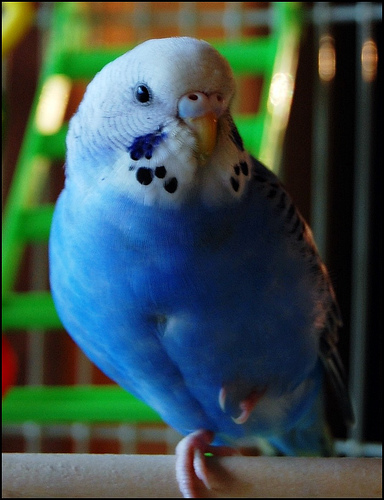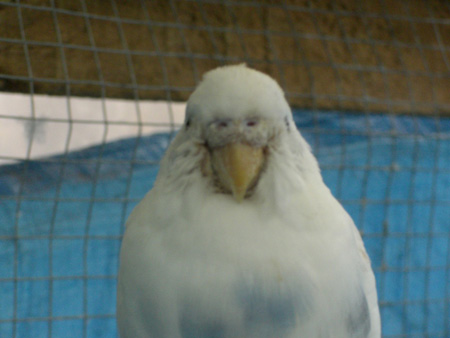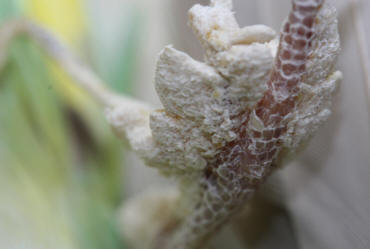Budgie Foot Problems
Budgies use their feet and claws to grip onto their perches and perform other acrobatic maneuvers so it is important to make sure their feet are operating to their maximum potential. Some of the simplest ways to avoid budgie foot problems is to make sure your budgie has a good well balanced diet consisting of vitamins and greens (vegetables). Make sure you keep your budgie’s cage clean with soft perches for your feathered friends to stand on. And most of all keep your eye on your budgie, in the wild budgie’s will try and hide that they are feeling unwell so they do not become prey, this means it can be hard to detect if your budgie is sick but there are still visible signs of budgie foot problems.
If you are ever doubtful about your budgie’s health, or are unsure if your budgie has any foot problems, don’t hesitate to consult a vet!

Bumblefoot: Bumblefoot is fairly common amongst budgies; it is essentially an inflammation/infection of the bottom of the foot. In its early stages symptoms include a reddening and thinning of the skin on the bottom of your budgies feet. Ulcers can then develop on the pads of the feet and if left untreated the feet swell and the tissue can become necrotic (the tissue dies) and eventually the infection can spread to the bone of the foot.
Common causes of bumblefoot are hard plastic perches, sandpaper covering perches, unclean perches (bacteria builds up if you don’t regularly clean or change perches) and even a vitamin deficiency or other nutritional problems.
The best ways to avoid bumblefoot are by avoiding the common causes! Clean perches regularly, make sure your budgie has a good diet and gets all the vitamins they need, softer perches make life easier too so look for soft wood or cotton rope perches.
Antibiotics and anti-inflammatory medications will help the healing process and reduce the swelling and discomfort for your budgie. If your budgie has a severe case of bumblefoot than bandages can be used to stop any further infection, but as with all dressings these must be regularly changed. Depending how bad your budgie’s infection is, bumblefoot can take from weeks to months before you see any improvement in health.
Scaly face: Scaly face is actually a parasitic infestation that is common amongst caged birds; it is caused by a borrowing mite called the Cnemidocoptes pilae. Symptoms include a Fungus growth on beak, around eyes and legs & vent, but not all areas are necessarily affected.
Severe Scaly face is curable by using a medication known as ivermectin and it is usually prescribed by vets. If your budgie is suffering from a less severe case you can try to use Dettol disinfectant; Dab the affected areas of your budgie 3 times a day for 3 days, and then twice a day for up to 3 weeks using a Q tip, making sure to avoid your budgies nostrils, eyes and mouth. Dettol should also be used to clean your Budgies cage when treating mites as it is harmless for the birds and really kills the mites.

A Budgie Suffering from Scaly Face
Scaly legs: Scaly legs are caused by mites attacking your budgies legs, the mites cause skin protrusions and this causes large scales. You may only see tiny red spots where the mites are borrowing into your budgies feet, or you may see dry flaky scales on the skin.
Treatment for scale legs is the same as scaly face, ivermectin can be used in severe cases and dettol can be successful also.

A Budgie's foot with a mite infestation
Our video below goes over these 2 more common Budgie foot problems! If video is more your style, watch below and don't forget to subscribe to us on Youtube!









